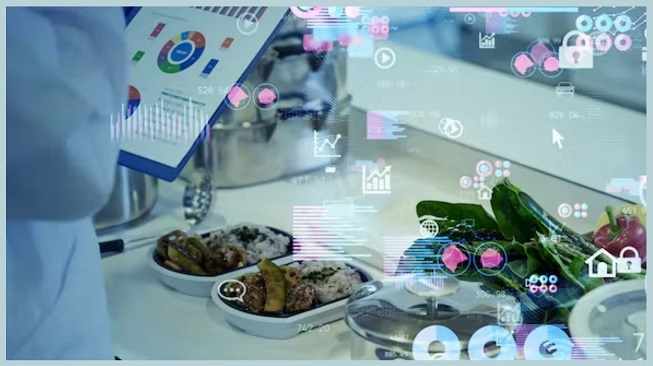AI (Artificial intelligence) can detect if food is ultra-processed and much more
It has been extensively shown in recent years that eating ultra-processed meals is associated with a higher risk of developing ailments including cardiovascular problems, obesity, diabetes, or metabolic syndrome.
There is also convincing evidence connecting these products to other chronic illnesses including cancer and neurological conditions. But is ultra-processing uniform across the board?

The inability to distinguish between different levels of processing within this category was the biggest obstacle to addressing this issue.
The NOVA, which divides all foods into four categories, is the categorization scheme that is most widely acknowledged by the scientific world.
NOVA 4 would include the ultra-processed, whereas NOVA 1 (unprocessed or little processed), NOVA 2 (culinary ingredients), and NOVA 3 (the other items) included (processed).
The hummus is not the same as industrial pastries
However, Nova 4 is very heterogeneous. In it, we can find from humus to industrial pastries.
Since it is not possible to differentiate degrees of processing within this group, we cannot establish associations between the different ultra-processed and the prevalence of the aforementioned diseases.
That problem has been solved by researchers from Boston and Budapest through Machine Learning or “Automatic Learning”, a branch of artificial intelligence.
The study is published as Preprint without revision by other scientists yet – although the system it proposes is already being applied.
The FoodProX classifier using machine learning was employed by the researchers to classify meals according to their level of processing.
The algorithm uses the nutrients listed on the food labels as inputs to do this. As a result, you can tell how processed a raw onion is (NOVA 1 probability: 96.5%; NOVA 4 probability: 99.2%) and how processed “onion rings” are.
What changes between a raw onion and onion rings
These probabilities led to the development of the Food Processing Score (FPro), where 1 represents the most ultra-processed food imaginable and 0 represents raw food.
For instance, FPro gradually rises from 0.0203 points for the raw onion to 0.3126 points for boiling onion to 0.7779 points for the fried onion to onion rings (0.9955).
Assigning lower values to dishes created with fresh components than to those that integrate more processed ingredients, enables displaying the level of processing that defines the various food preparation procedures. Additionally, FPro categorizes combined meals and complicated recipes.
The inclusion of specific additives that increase their sensory qualities, such as taste enhancers, fragrances, colors, emulsifiers, etc., is what the NOVA categorization refers to as the characteristic of ultra-processed goods.
FoodProX’s ability to categorize foods was increased by adding information on additives, but the majority of the predictive power came from changes in the nutrient profile.
In other words, the nutrients were sufficient to establish whether a product was ultra-processed without the need for additions.
However, it is also possible to teach artificial intelligence to evaluate the nutritional value of food by taking the location of its preparation into account.
In other words, it can tell the difference between home-cooked meals, food produced in cafeterias, canteens, and restaurants, fast food, and items sold at vending machines.
the proportion of highly processed foods in each person’s diet
As if that weren’t enough, FoodProX can assess how much of a role ultra-processed foods play in each person’s diet.
The researchers achieved this by developing the Individual Food Processing Score (iFPro), which likewise has a scale of 0 to 1.
The information that Americans have an iFPro of 0.7872, which demonstrates this population’s heavy reliance on the consumption of ultra-processed foods, was, therefore, able to be obtained.
iFPro is already utilized on the TrueFood website, even though, as I mentioned above, the work has not yet been published in a journal after being reviewed by other scientists.
It is produced by the same research team and uses iFPro as a percentile to display the level of processing for several items. A natural yogurt, for instance, would rank in the fourth percentile of all yogurts.
That implies that 96 of the products on a shelf that includes 100 distinct items will be more processed than plain yogurt.
FPro and iFPro may be used to categorize foods, whole meals, and diets, therefore it is feasible to utilize these indicators to search for correlations with the incidence of the most prevalent metabolic illnesses. NOVA categorization is used for the same purpose but in a much more exact manner.
There are several further potential uses. For instance, FPro and iFPro would allow for the establishment of cut-off points at which food starts to be discouraged.
Alternately, educate artificial intelligence with other factors like the amount of promotion that certain goods receive or if the firm that makes them is a multinational.
It would be fascinating for dietitians and nutritionists to be able to gauge how much their patients consume ultra-processed food. And for the government to be aware of how much of these foods are consumed by whatever demographic.
You can probably come up with a lot more uses for this system. Though it goes much beyond, in my opinion, it improves the NOVA categorization.
Related Post
